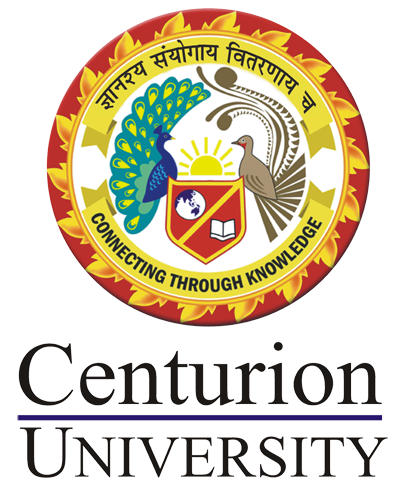Computational Biology
Course Attendees
Still no participant
Course Reviews
Still no reviews
Code(Credit) : CUTM1435(3-1-0)
Course Objectives
Introduce students to the field of computational biology. To make them realize the importance of insilico databases and computational tools to understand biology in a better way.
Learning Outcomes
. To be familiar with the basic concepts of Computational Biology and its significance in biological data analysis.
. Learn and able to employ various computational tools for modern day research.
Course Syllabus
Module-I : Computational Biology Fundamentals and Biological Databases
1.1.Computational Biology: Basic Concepts, importance and application
1.2. Biological Databases: Classification and different types of Biological Database
1.3. DNA and Protein sequence analysis, Pairwise and multiple sequence alignment
1.4. Protein structural analysis, protein structure modeling and prediction
Practice : Demonstration and usage of web resources: EMBL, GenBank, ENTREZ
https://www.youtube.com/watch?v=Phxkg5H5Q6E
Module-II : Database Management Systems and Its Application in Computational Biology
2.1. Database Management Systems: Basic Concepts, importance and application
2.2. Database Models, relational database
2.3. SQL
2.4. Data mining: Fundamentals, Classification and applications of data mining
Practice : Retrieving sequence data from Entrez
http://vlab.amrita.edu/index.php?sub=3&brch=273&sim=1437&cnt=1
Module-III: Insilico Drug Design
3.1. Insilico Drug Design: Basic Concepts, importance and application
3.2. Molecular force fields and energy minimization
3.3. Molecular Dynamics Simulation methods
3.4. Methods of Insilico Drug Design: structure and ligand based drug design approach
Practice : structure based drug design: Molecular docking using Biovia
Module-IV: Systems and Synthetic biology
4.1. Systems and Synthetic Biology : Basic Concepts, importance and application
4.2. Systems Modeling
4.3. Formulating and Simulating Network Models in Biology
4.4. Potential Hazards of Synthetic Biology
Practice: Mathematical modeling and simulating of Biochemical network
http://vlab.amrita.edu/index.php?sub=3&brch=276&sim=1457&cnt=1
Module-V: Algorithms in Computational Biology
5.1. Algorithms in Computational Biology: Algorithms and complexity, biological versus computer algorithms
5.2. recursive algorithms, iterative versus recursive algorithms
5.3. Overview of algorithm design techniques: Dynamic programming
5.4. Markov Chains and Hidden Markov Models : Concept and application in computational biology.
Practice : 1. Pairwise Sequence Alignment using BLAST
http://vlab.amrita.edu/index.php?sub=3&brch=274&sim=1428&cnt=1
2. Aligning Multiple Sequences with CLUSTAL W
http://vlab.amrita.edu/index.php?sub=3&brch=274&sim=1438&cnt=1
Module-VI: Biopython and It's application in Computational Biology
6.1. Biopython: Introduction, important features and application of biopython in computational biology
6.2. Create a simple sequence in Biopython for DNA, RNA and Protein Alphabets
6.3. Sequence Alignment Tools in Biopython
6.4. PDB Module of Biopython
Practice: Align nucleotide/protein sequences using tools available in biopython
https://www.tutorialspoint.com/biopython/biopython_sequence_alignments.htm
Module-VII: Biojava and It's application in Computational Biology
7.1. Biojava: Introduction, importance and application of Biojava to computational biology
7.2. Protein structure module of Biojava and its use in manipulating structure of protein
7.3. Genome and sequencing module of biojava and its application for analyzing sequence data
7.4. Biojava alignment module and its application for pairwise and multiple sequence alignment
Practice : Study of protein structure using biojava
https://github.com/biojava/biojava-tutorial/blob/master/structure/img/4hhb_jmol.png
Reference Books
1. Bioinformatics: Sequence and Genome Analysis by Mount D., 2004, Cold Spring
Harbor Laboratory Press, New York.
2. Biological Sequence Analysis: Probabilistic models of protein and Nucleic
acids by Durbin
et al., 2007,Cambridge University Press.
3. Bioinformatics- a practical guide to the analysis of Genes and Proteins by
Baxevanis,A.D. and Francis Ouellellette, B.F., 1998, John Wiley & Sons, UK.
4.Introduction to bioinformatics by Teresa K. Attwood, David J. Parry-Smith,
1999,Pearson Education.
5.Arthur M.Lesk, Introduction to Bioinformatics, Oxford University Press, New Delhi, 2003.
6. D.Higgins and W.Taylor (Eds), Bioinformatics-Sequence, Structure and
databanks, Oxford University Press, New Delhi, 2000.
Session Plan
Session 1
Computational Biology: Basic Concepts, importance and application
Session 2
Biological Databases, Classification and different types of Biological Database
https://www.youtube.com/watch?v=QjHKV2tkHSI
Session 3
DNA and Protein sequence analysis, Pairwise and multiple sequence alignment
https://www.youtube.com/watch?v=YVGpn-XNb58
Session 4
Protein structural analysis, protein structure modeling and prediction
https://www.youtube.com/watch?v=OEzVUrhtZ6s
Session 5
Practice : Demonstration and usage of web resources: EMBL, GenBank, ENTREZ
Session 6
Database Management Systems: Basic Concepts, importance and applicationhttps://www.youtube.com/watch?v=wR0jg0eQsZA
Session 9
Data mining: Fundamentals, Classification and applications of data mining
https://www.youtube.com/watch?v=W44q6qszdqY
Session 10
Practice : Retrieving sequence data from Entrez
http://vlab.amrita.edu/index.php?sub=3&brch=273&sim=1437&cnt=1
Session 11
InSilico Drug Design: Basic Concepts, importance and application
https://www.youtube.com/watch?v=Bmco5vDm7YA https://www.youtube.com/watch?v=aNl7z0MOAVM&list=PLCrHV5bhSbP0gP08ooS3tuBlRsEfDNWLs&index=3
Session 12
Molecular force fields and energy minimization
https://www.youtube.com/watch?v=lLFEqKl3sm4
Session 14
Methods of InSilico Drug Design: structure and ligand based drug design approach
Session 15
Practice : structure based drug design: Molecular docking using Biovia
Session 16
Systems and Synthetic Biology : Basic Concepts, importance and application
https://www.youtube.com/watch?v=rD5uNAMbDaQ
Session 18
Formulating and Simulating Network Models in Biology
Session 19
Potential Hazards of Synthetic Biology
Session 20
Practice: Mathematical modeling and simulating of Biochemical network
http://vlab.amrita.edu/index.php?sub=3&brch=276&sim=1457&cnt=1
Session 21
Algorithms in Computational Biology: Algorithms and complexity, biological versus computer algorithms
https://www.youtube.com/watch?v=48Xr-H05raA&t=29s
Session 22
Recursive algorithms, iterative versus recursive algorithms
Session 23
Overview of algorithm design techniques: Dynamic programming
https://www.youtube.com/results?search_query=dynamic+programming+mit+
Session 24
Markov Chains and Hidden Markov Models : Concept and application in computational biology
https://www.youtube.com/watch?v=d5NMrA2HkG4&list=PLUl4u3cNGP63uK-oWiLgO7LLJV6ZCWXac&index=10
Session 25
Practice: Pairwise Sequence Alignment using BLAST
http://vlab.amrita.edu/index.php?sub=3&brch=274&sim=1428&cnt=1
Session 26
Practice: Aligning Multiple Sequences with CLUSTAL W
http://vlab.amrita.edu/index.php?sub=3&brch=274&sim=1438&cnt=1
Session 27
Biopython: Introduction, important features and application of biopython in computational biology
Session 28
Create a simple sequence in Biopython for DNA, RNA and Protein Alphabets
https://www.youtube.com/watch?v=r66YCsA4YqM
Session 30
PDB Module of Biopython
https://www.youtube.com/watch?v=GkadFs-igdQ&list=PLNj5Z_OpbXrIRz6H8iaBfVJyIkWplNb1D&index=24
Session 32
Practice: Align nucleotide/protein sequences using tools available in biopython
https://www.tutorialspoint.com/biopython/biopython_sequence_alignments.htm
Session 33
Biojava: Introduction, importance and application of Biojava to computational biology
https://www.youtube.com/watch?v=OxZ0NGYiVRo
Session 34
Protein structure module of Biojava and its use in manipulating structure of protein
https://github.com/biojava/biojava-tutorial/blob/master/structure/img/4hhb_jmol.png
Session 35
Genome and sequencing module of biojava and its application for analyzing sequence data
https://biojava.org/wiki/BioJava:CookBook3:FASTQ
Session 36
Practice : Study of protein structure using biojava
https://github.com/biojava/biojava-tutorial/blob/master/structure/img/4hhb_jmol.png
Our Main Teachers

Dr. Jyoti Prakash Rath is presently working as Assistant Professor (Botany), School of Applied Science, Centurion University of Technology and Management, Odisha (Bolangir campus). After earning his Bachelor’s degree in Botany and Master’s in LifeSciences, Dr. Rath moved to New Delhi for his higher studies and received his M.Phil.(Bioinformatics) from Jawaharlal Nehru University […]


Recent Comments